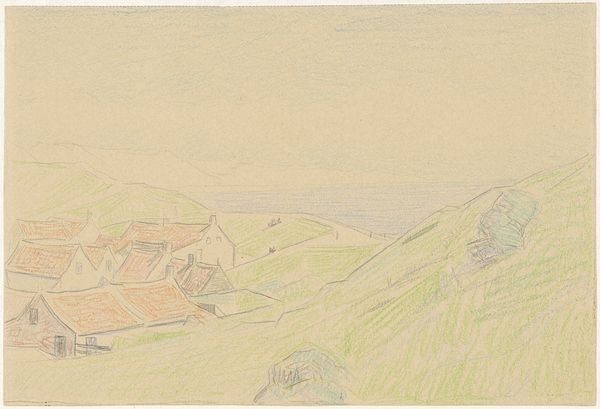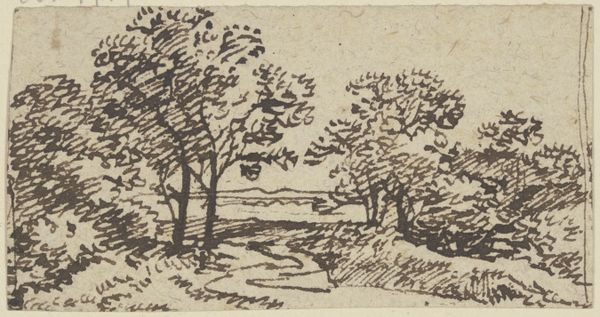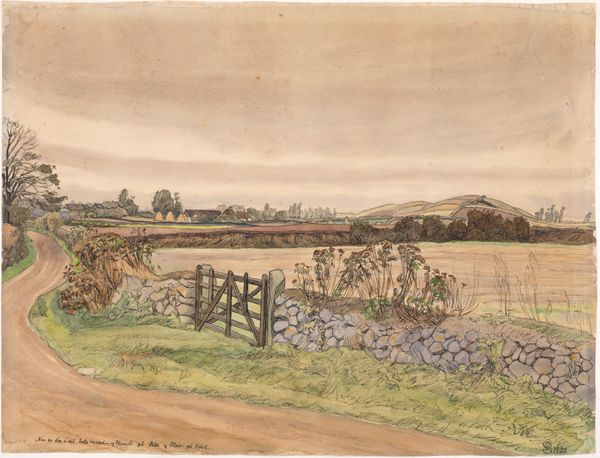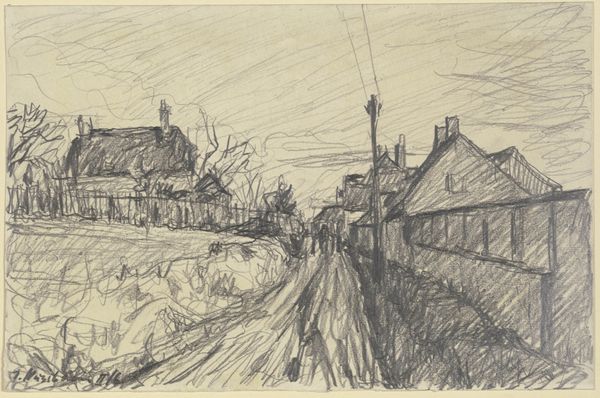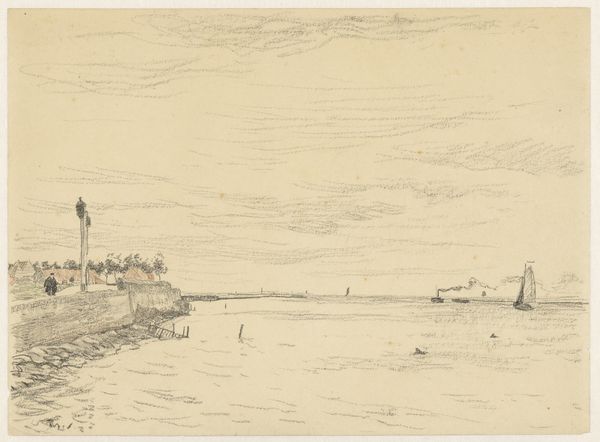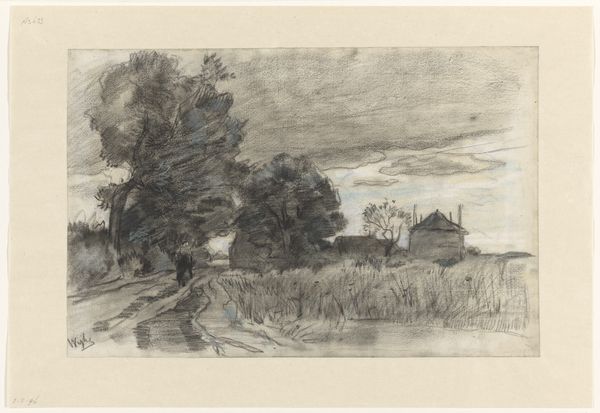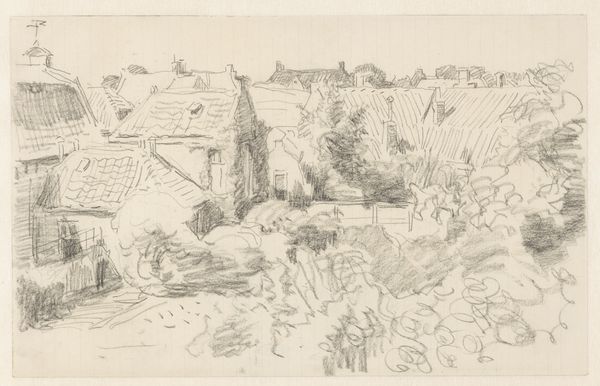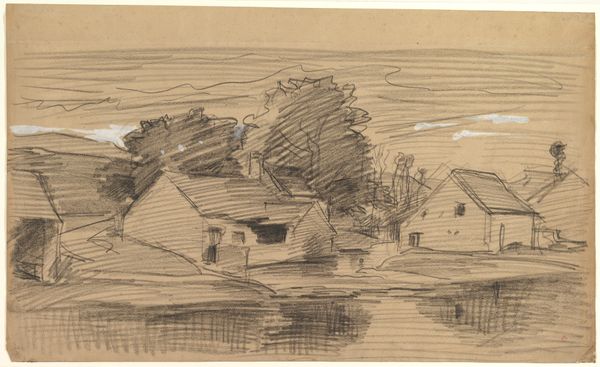
Copyright: Public Domain
Curator: Fried Stern created "Gemünden am Main" in 1930 using colored pencil, chalk, and pencil. It resides here at the Städel Museum. Editor: Immediately, I'm struck by the tranquility of the scene. The soft colors, the gentle lines...it evokes a very peaceful feeling, like a memory. Curator: It's interesting you say memory, because landscape, especially rendered en plein air as this was, often carries a strong association with personal and collective memory. Consider how the familiar features of Gemünden – the river, the distant hills – might have held specific significance for Stern. Editor: I'm intrigued by the gate. It's almost centered, like a symbolic passage or perhaps a barrier? The implication here is a separation between foreground and what lies beyond. Is he drawing attention to access, the viewer's entry, into the scene itself? Curator: Absolutely. Gates often symbolize thresholds, transitions, both literal and metaphorical. Given the socio-political climate in 1930, with rising anxieties in Germany, this 'threshold' becomes a point of investigation: Is it an invitation or a warning? Editor: And the muted color palette feels significant too. Nothing is glaring or aggressive; it's as if he is creating an idyllic vision or ideal, perhaps a counterpoint to turmoil happening at the time? I notice an impressionistic quality also… Curator: Stern's choice of pastel-like chalks definitely adds to that sense of gentleness and distance. It speaks to the legacy of Impressionism, but also a conscious choice to soften the realities around him. Editor: Thinking about the historical context makes me see it in a new light. This isn't just a pretty picture of a landscape. The river might also indicate trade routes, commerce, mobility as the boat itself represents the action. Curator: Exactly. Stern creates a tension between idyllic representation and the underlying political currents which invite further considerations regarding the image's socio-cultural and personal dimensions. Editor: Considering this work further now, this is a poignant meditation on place and memory during a volatile time, full of symbolic gestures. Curator: A vital reminder how even seemingly straightforward landscape sketches can contain deep and resonant cultural information.
Comments
No comments
Be the first to comment and join the conversation on the ultimate creative platform.
